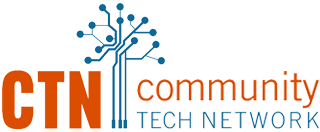Recently I was talking with a learner in one of the computer labs. She wanted to print out a map. After a bit of talking, it became clear that she wanted a map in order to measure distances to calculate travel times, you know, the way that people have used maps for years — “According to the legend, it looks like my pinky is about 10 miles, so this trip is about 300 miles, so let’s say 6 hours.” Imprecise but functional. I got to have the satisfying moment of saying, “Well, you are not alone. Everyone wants to calculate travel times, so, ta-da, a mapping program that, free of charge, provides precise data on distance, time, and routes.”I got to hear the gratifying praise, “This is marvelous!” Sometimes it is great to be the messenger.
“And,” I continued magnanimously, “if you have a computer at home, you can do this research on that device.”
“Will it work on this?” asked the learner, pulling out an iPhone 5s.
I assured her that, yes, yes, she could do the mapping thing on her phone. As I started to show her, we attracted a crowd. Two learners sitting nearby pulled out their iPhones and I assured them that they could all do map stuff. I realized all of these learners only interact with their phones as, well, phones, not the miniature supercomputers that they are. When I asked them why they had purchased the devices, everyone said the obvious — to have a phone. Iasked why this phone? Why not a forty-dollar flip phone? They said because people told them this is what they should get.
I do not recount this story to mock any learner or to make light of differences in knowledge or understanding. I tell this story to get us thinking about what devices we acquire and what devices we encourage others to acquire. This week, as a whole new style of computer, a computer for the wrist, goes on sale (and yes, I can see how that could be a super cool thing to have), let’s think about assessing what we need.
With support and guidance, the learners who had only used their phones as phones will probably strike out into new territories. But maybe not. On the day I worked with them each struggled with tiny screens and keyboards that need pinpoint accuracy. They were not having fun. Maybe, months before, had they sat down and really assessed their needs and limits with someone, they might have decided to go with a different device.
Most of our learners are not wealthy, yet we have seen people come in who have a smartphone and an iPad and a Kindle and a laptop and a desktop. They felt like they needed all those things to be up-to-date or to get the benefits of the digital age. Or maybe they heard that they needed them or they found that one wasn’t quite right so they tried another. Or maybe they couldn’t pass up a tablet at a garage sale — such a deal! — but no one supports the software anymore. For any number of reasons, people end up with expensive devices that don’t really work for them.
It’s a challenge, parsing what you need, parsing what will still be viable in two years. But it is crucial to really evaluate those needs. Yesterday I talked with a learner who wants to get a laptop. He doesn’t have much to spend, but he needs the computer to run some pretty big software (he’s back at school, getting an undergrad degree). I saw his eyes light up when we found a device he might be able to afford. But then, with a little more searching, we figured out the computer could not support the software. Disappointing, but at least he had not dropped all his savings on something that would be devaluing even as it shipped.
So this is just a little reminder to think about what you acquire, to think about what you encourage others to acquire, and to help those in your life get what they actually need.


Comments are closed.